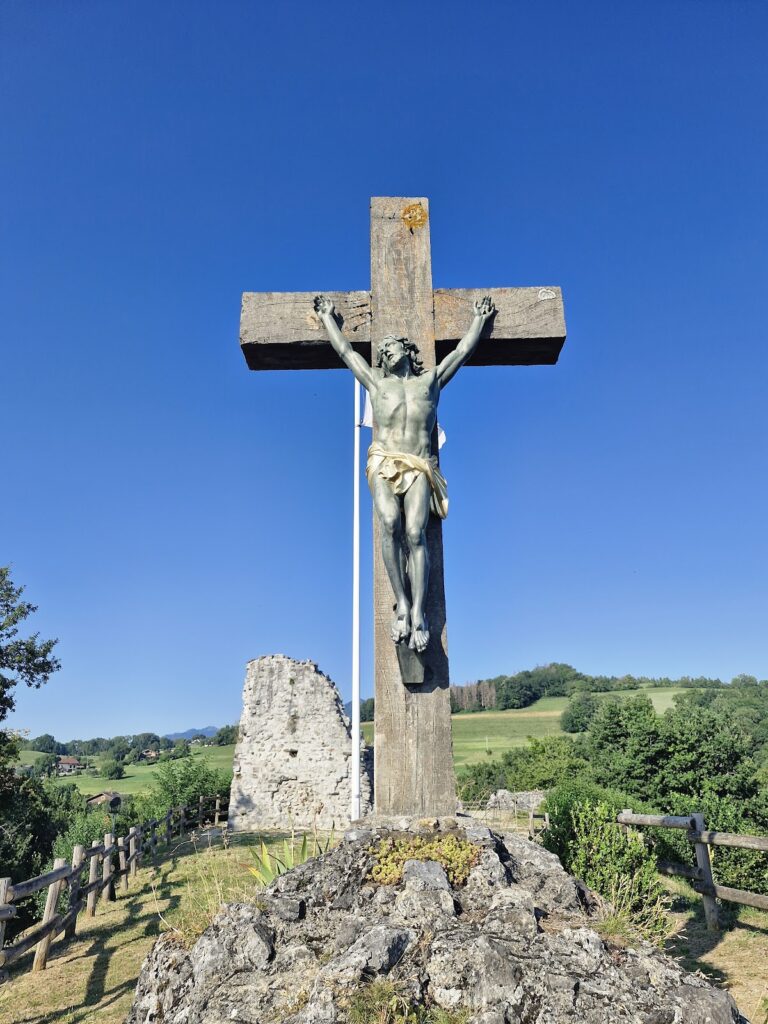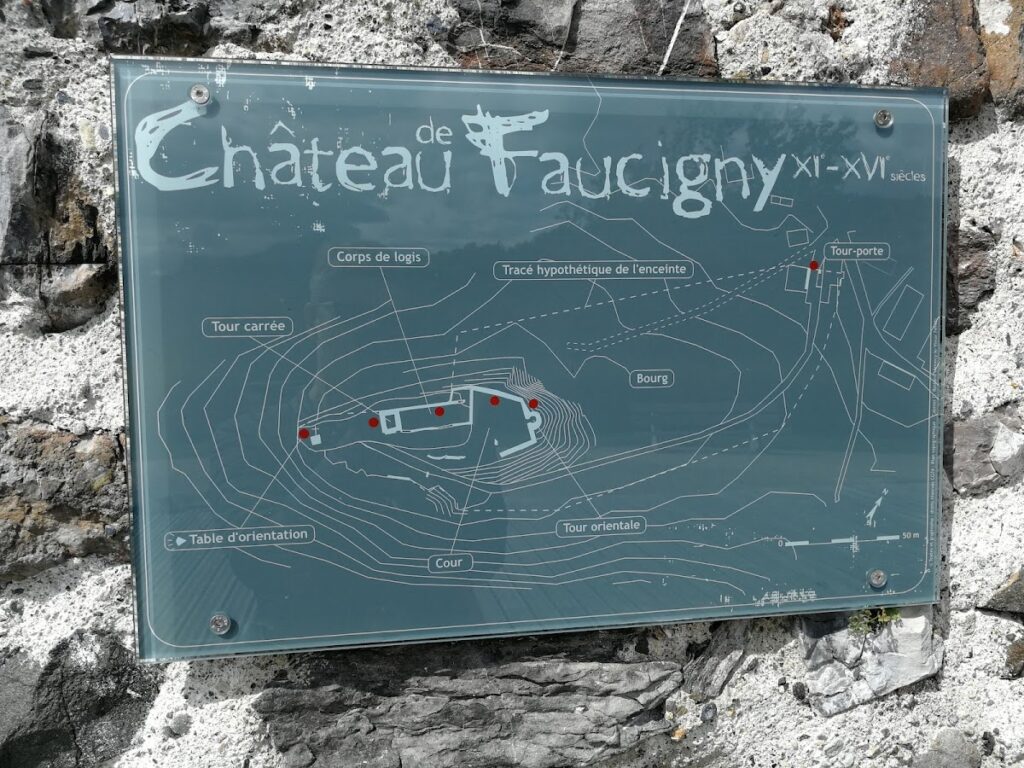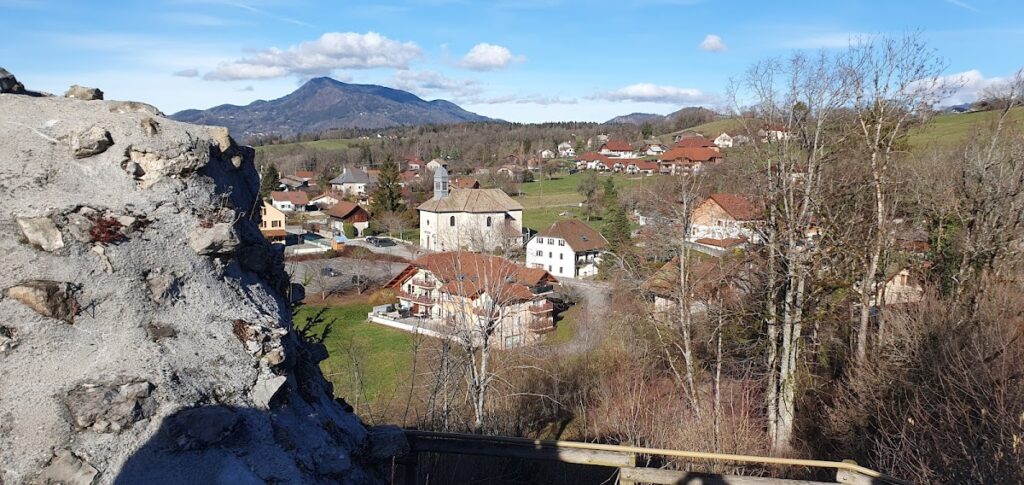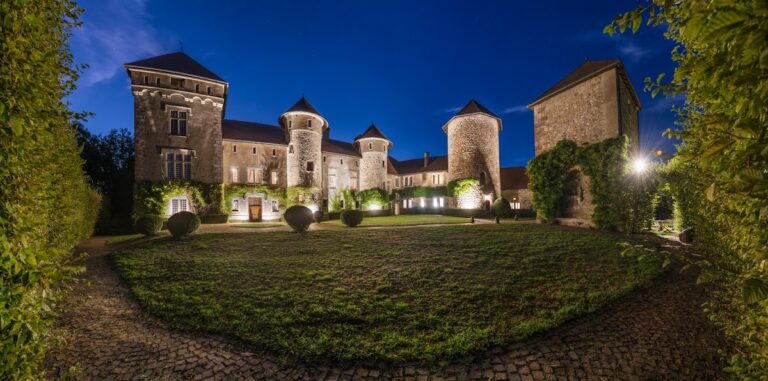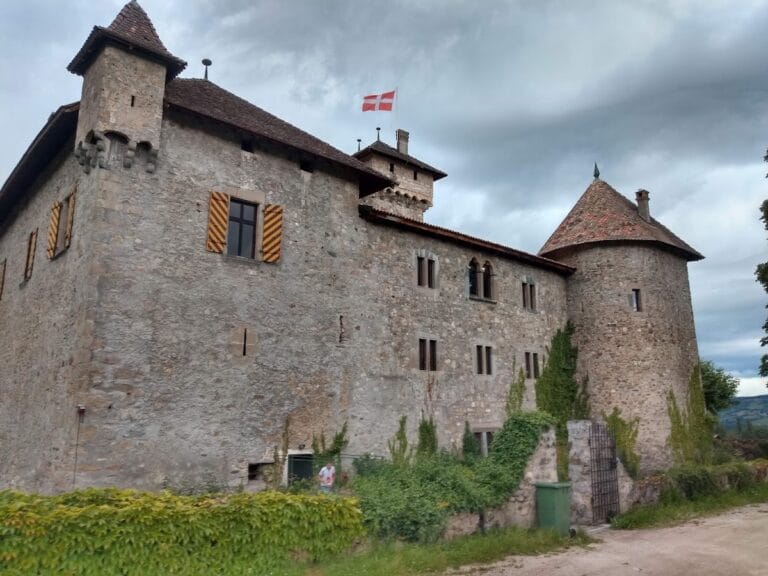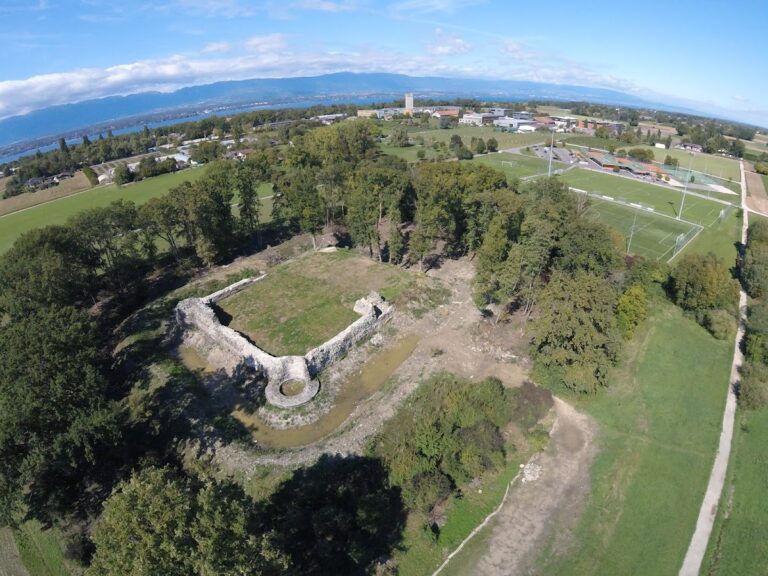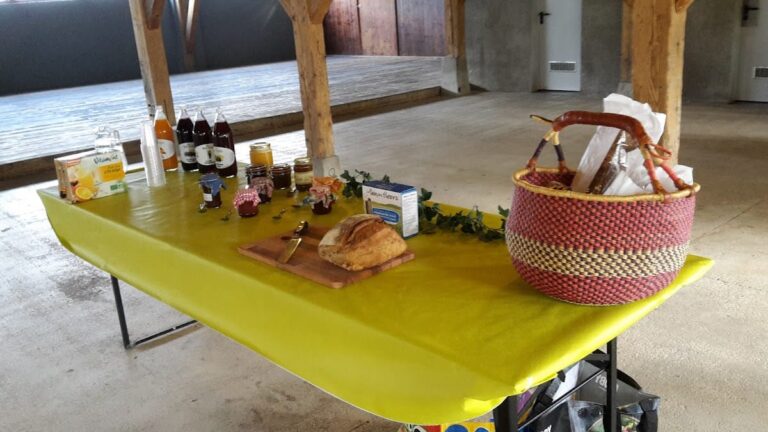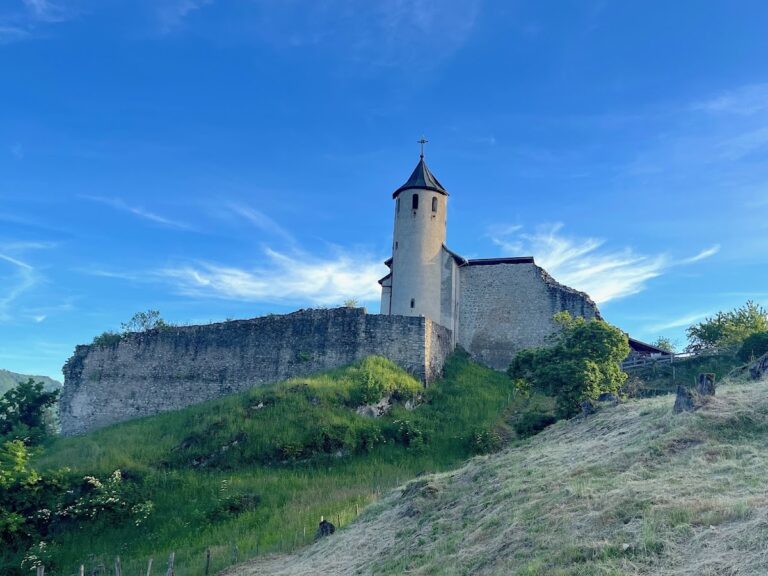Château de Faucigny: A Medieval Fortress in Faucigny, France
Visitor Information
Google Rating: 4.2
Popularity: Low
Google Maps: View on Google Maps
Official Website: www.paysalp.fr
Country: France
Civilization: Unclassified
Remains: Military
History
The Château de Faucigny is a medieval fortress located in the municipality of Faucigny in modern-day France. It was constructed by the local lords who controlled the Arve valley during the early Middle Ages.
The fortress likely dates back to the 11th century, although records explicitly mention it as early as 1119. Its origins may trace to an earlier fortified site, possibly an oppidum (a type of fortified settlement) referenced around the year 930. For several centuries, the castle served as the ancestral home of the lords of Faucigny, who held authority over the surrounding region.
Around the year 1200, Aymon II, a lord of Faucigny, relocated his residence to the Château de Châtillon-sur-Cluses, a more centrally positioned castle. Following this move, the Château de Faucigny transitioned into the administrative center of a châtellenie, or local district, maintaining this role from the 13th through the 16th centuries.
In 1262, the castle came under the control of the House of Savoy through Agnès de Faucigny’s will, which awarded the property to her husband, Pierre de Savoie. Thereafter, the fortress was managed by a seneschal, a local official responsible for defense and administration, many of whom came from the Faucigny-Lucinge family. Although the nearby establishment of Bonneville in 1251 diminished the castle’s strategic importance, it continued to function as a seigneurial, or lordly, center within the Savoyard domain. Its status was reaffirmed in a 1308 peace agreement between the Count of Savoy and Béatrice, known as the Grande Dauphine.
Throughout the 14th and 15th centuries, various seneschals and castellans governed the castle, with many appointed from noble families such as Lucinge, La Fléchère, Menthon, and Moyron. By the 16th century, under the administration connected to the Genevois-Nemours apanage, the château’s role evolved to include use as a prison. Eventually, it was abandoned and fell into ruin sometime during the mid-1500s.
In 1699, the religious order of the Barnabites acquired the castle and its lands from Victor-Amédée II. Despite the structure’s decline, major masonry was still largely intact by 1738. During the French Revolutionary period, stones from the decaying fortress were taken to supply local construction projects. Later, during the rule of the Sardinian monarchy, the ruins and adjacent land were purchased by a deputy named Bastian, whose family erected a cross on the rock base in the 17th century, marking the site’s enduring significance.
Remains
Perched on a dolomitic limestone outcrop at about 706 meters above sea level, the Château de Faucigny commands views over the Arve valley, rising more than 250 meters above the surrounding plain. The castle’s remains reveal a layout composed of two main enclosing walls, or enceintes, arranged at different levels. The lower enceinte encircled the plain-château and the village area, while the upper enceinte contained the principal defensive structures.
The lower enclosure was protected by a ditch and featured a fortified gate set between two square towers. These towers have since been transformed into residential buildings. The entrance was once secured by a portcullis—a heavy grille that could be raised or lowered—with remnants of the groove that guided it still visible today, along with evidence of a drawbridge mechanism.
Inside the upper enceinte stood a Romanesque keep—a square-shaped tower approximately 9.5 meters on each side, reinforced at the corners by buttresses. This tower was likely a Bergfried, a tall defensive tower common in medieval fortifications within southern France and the Holy Roman Empire. The keep was demolished in 1891, but stones from its dismantling were repurposed in constructing the local presbytery, providing a tangible link between the castle’s past and the present village.
Adjacent to the former keep was the residential logis, which included large, well-lit rooms, functional kitchens, stables, and storage facilities. At one end of this building stood the so-called “Queen’s Tower,” adding to the complex’s residential and defensive character. The oldest surviving masonry, found in both the keep and Queen’s Tower, consists of carefully laid small-sized stones and likely dates back to the earliest phase of construction in the 11th century.
By the 18th century, despite the castle’s general ruin, the main walls and key structural elements remained standing, preserving the outline of this once important stronghold. While the site has undergone various changes and partial demolitions over time, the enduring presence of its fortifications reflects the long history of the Château de Faucigny as a defensive and administrative center.
